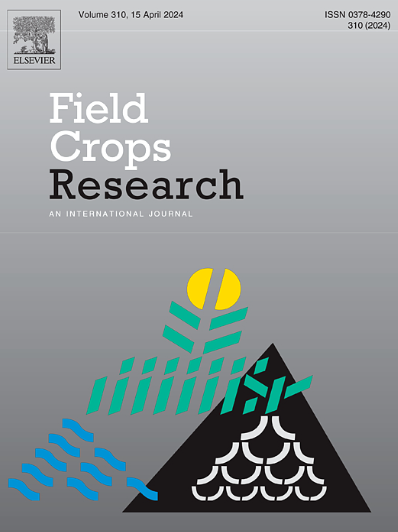基于土壤钾有效性的作物可持续生产有效钾管理
IF 5.6
1区 农林科学
Q1 AGRONOMY
引用次数: 0
摘要
钾(K)是作物可持续生产所必需的重要营养元素。外源钾输入对土壤钾表观平衡的影响已得到越来越多的研究;然而,钾输入对不同特性土壤的钾储备和作物产量的影响却不甚了解。本研究在土壤钾供应量高的衢州和土壤钾供应量低的聊城分别进行了六季作物田间试验。研究考察了华北平原冬小麦-夏玉米施用钾肥、保留秸秆和清除秸秆对土壤钾储备和产量可持续性的影响。结果表明,在 QZ,钾肥和秸秆的共同施用不会影响作物的年产量,但在 LC,钾肥和秸秆的共同施用会显著提高产量 21%。在 QZ,作物对钾的吸收率高于 LC,在这两个地点,秸秆的保留都会提高作物对钾的吸收率,这表明秸秆是促进钾吸收的重要补充。可提取的 NH4OAc 钾在表土中含量最高,但在钾输入量较高的情况下,可能会转移到更深的土层中,尤其是在 LC 地点。两地在不施钾肥的情况下,去除秸秆后的缓慢可利用钾都有所减少,但在施用 332 千克/公顷钾肥的情况下,QZ 的缓慢可利用钾保持不变,而 LC 则有所增加。建议的钾肥施用量(112 千克/公顷)对 QZ 的土壤 NH4OAc 可提取钾浓度没有显著影响,但只有在保留秸秆的情况下,LC 的土壤 NH4OAc 可提取钾浓度才会增加。换句话说,对于最初富含钾的土壤,可持续的钾管理策略应考虑根据钾肥价格调整钾的表观平衡。相反,对于天然缺钾的土壤,在战略性使用秸秆的同时,通过钾肥提高土壤钾肥力也是至关重要的。本文章由计算机程序翻译,如有差异,请以英文原文为准。
Effective potassium management for sustainable crop production based on soil potassium availability
Potassium (K) is an essential macronutrient for sustainable crop production. The impact of exogenous K input on soil K apparent balance has been increasingly investigated; however, the effects of K input on K reserves and crop yields in soils with different characteristics are not well understood. This study conducted a six-season crop field experiment at Quzhou site (QZ), a region with inherently high soil K availability, and Liaocheng (LC) site, a region with low soil K availability. It examined the impacts of K fertilizer application, with straw retention and straw removal, on soil K reserves and yield sustainability of winter wheat-summer maize in the North China Plain. The results indicated that co-application of K fertilizer and straw did not influence crop annual yield at QZ but significantly increased yields by 21 % at LC, and the co-application did not significantly affect the sustainable yield index at both sites. Crop K uptake was higher at QZ than at LC and was increased by straw retention at both sites, suggesting straw is a vital supplement for promoting K uptake. NH4OAc-extractable K was most abundant in the topsoil but was likely translocated to deeper soil layers with higher K inputs, especially at the LC site. Slowly available K decreased for straw removal with no K fertilizer at both sites, but for application of 332 kg K ha−1, the slowly available K remained unchanged at QZ and increased at LC. The recommended K fertilization rate of 112 kg K ha−1 had no significant effect on soil NH4OAc extractable K concentration at QZ but the increase in that concentration at LC was only observed with straw retention. In words, for soils initially rich in K, a sustainable K management strategy should consider adjusting K apparent balances based on K fertilizer prices. In contrast, for soils naturally deficient in K, enhancing soil K fertility through K fertilization is essential, alongside the strategic use of straw.
求助全文
通过发布文献求助,成功后即可免费获取论文全文。
去求助
来源期刊

Field Crops Research
农林科学-农艺学
CiteScore
9.60
自引率
12.10%
发文量
307
审稿时长
46 days
期刊介绍:
Field Crops Research is an international journal publishing scientific articles on:
√ experimental and modelling research at field, farm and landscape levels
on temperate and tropical crops and cropping systems,
with a focus on crop ecology and physiology, agronomy, and plant genetics and breeding.
 求助内容:
求助内容: 应助结果提醒方式:
应助结果提醒方式:


